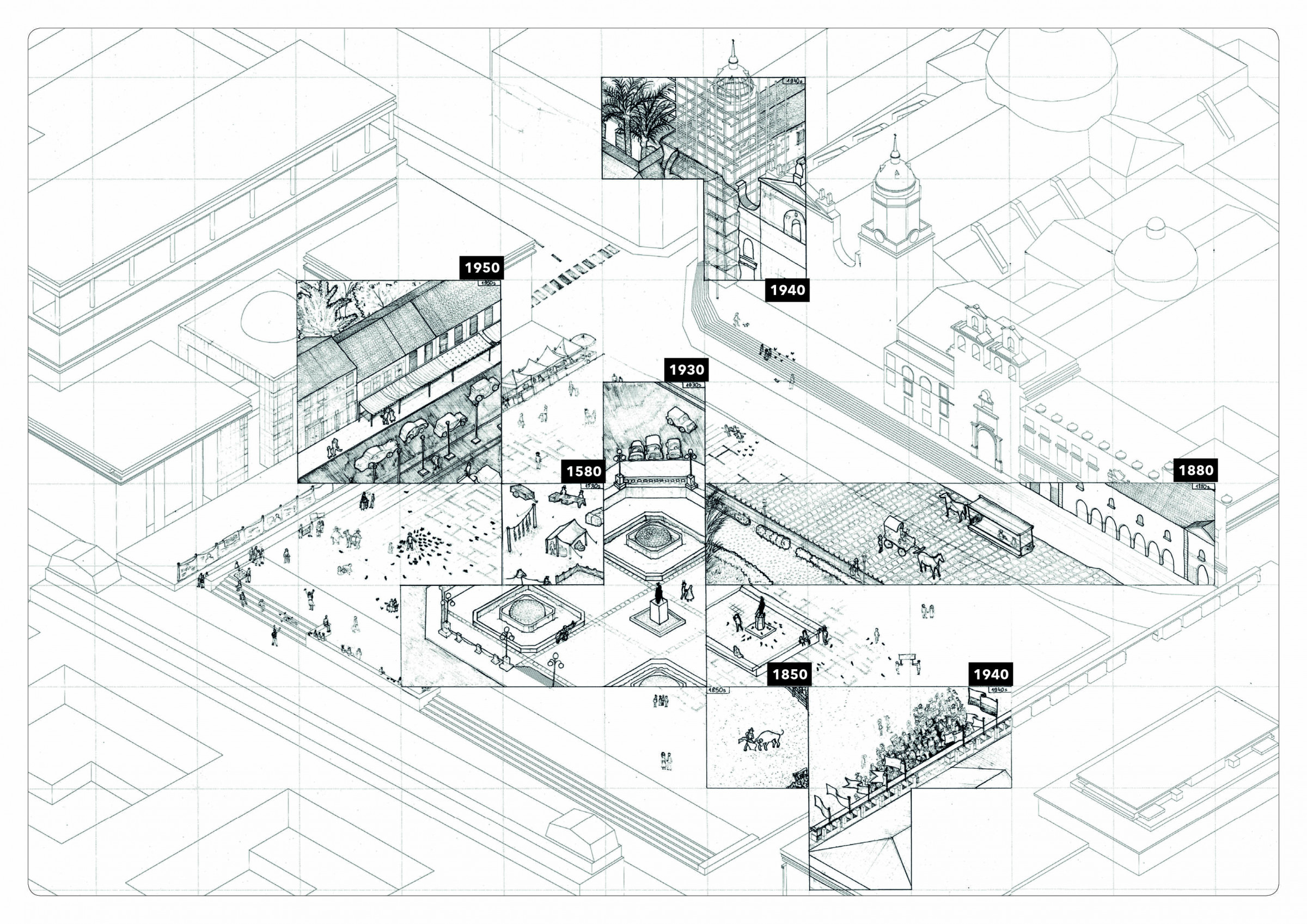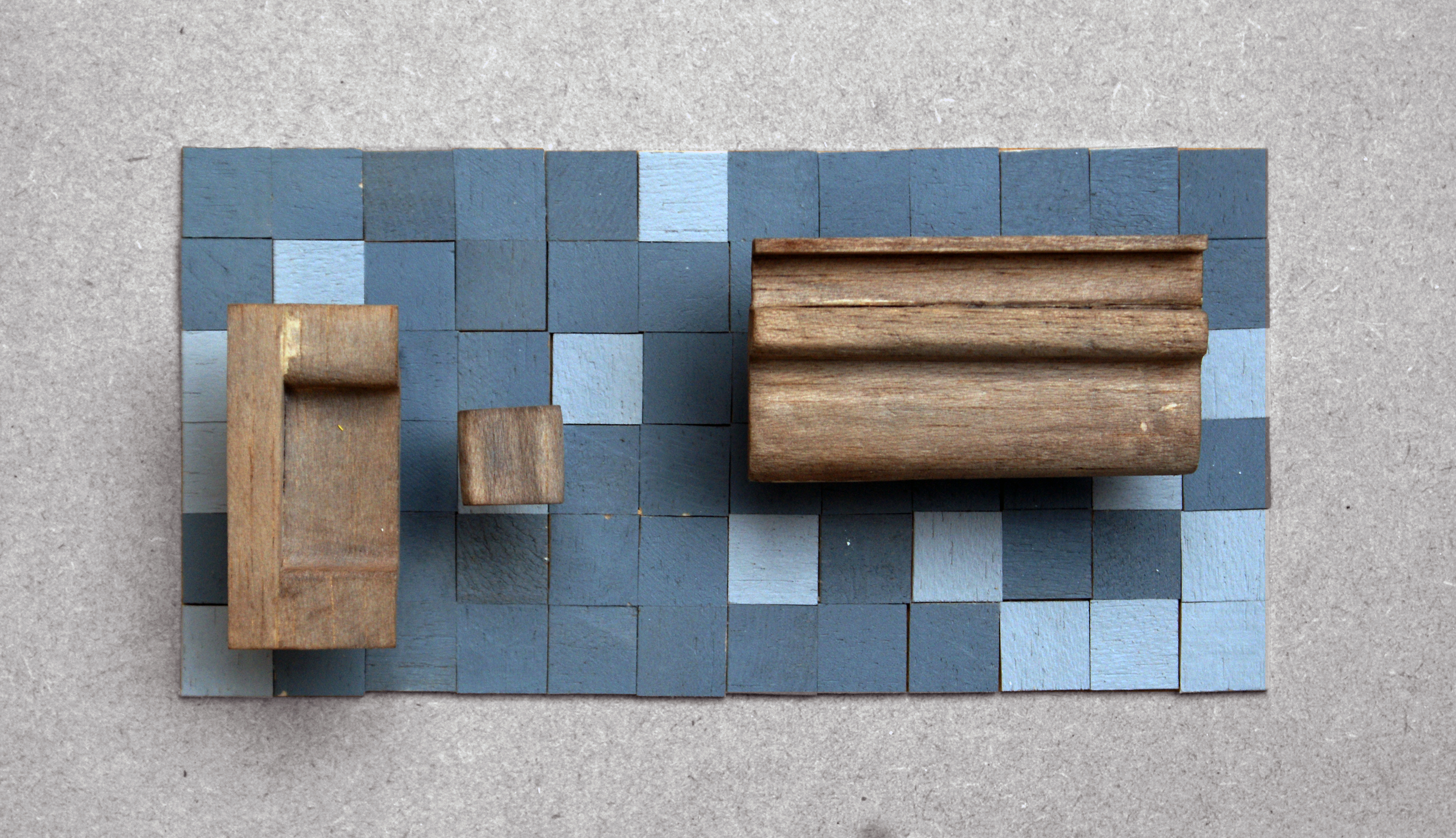Co-operative Commons
(IN)Tangible memory of the centre of Bogota
Students: Yoana Yordanova, Valentina Bencic
Title: (IN)Tangible memory of the centre of Bogota: Co-operative Commons
Semester: 2016 Autumn
Teachers: prof. dr. ir. Tom Avermaete, dr. ir. Klaske Havik, Jorge Mejia Hernandez
This project is represented in our chair's contribution to the 2018 Venice Architecture Biennial: Tools of the Architect as well as in our chair's contribution to the 2017 national Archiprix: Co-operative Commons
The project explores the notion of ‘the Commons’ within Bogota’s historic centre. The term ‘historic’ implies an inclusive method encompassing not only architecture, but also social practices, relations and rituals. Thorough investigation into these practices revealed the strengthening of the intangible memory is the key to start the organic process of creating the commons. This set up the centre of Bogota as a laboratory, which allowed for the interventions to interact with a highly complex context and push the line of the physical environment to achieve a new potential.
This project defines the Commons not as a place; that is not to say that it does not have a physical presence, but that it is guided by a series of actors performing through time. To put it simply, the Commons are created when different actors and their interests converge. In this way the project becomes the ultimate commons, dealing with the interests of many different actors, the idea of time and the tension between the tangible and intangible memory.
Our investigation stepped off from the centre of Bogotá, Colombia. It is a valuable part of the urban fabric and has many layers, including traces of the past. Although the centre of Bogotá has undergone many changes, including the destructive Bogotazo riots in 1948, it remains a worthy and valuable part of the city. This fascinating resilience led us to discover the concept of the intangible memory of the city. Our graduation project acknowledges the great importance of this aspect. The intangible memory can be found in, among other things, local customs and rituals such as street vending and the emerald trade. Given the agreeable climate, these activities are all over the city’s streets and public spaces. It is for this reason that the project, acting as an urban laboratory, explores the idea of the Commons in the historic centre of Bogotá. In wielding a method that encompasses not only architecture but also social practices, the project itself becomes the ultimate commons involving the different actors, the notion of time and the tension between the social and the physical. Cooperative Commons explores the various possibilities of recharging complex urban realities like the historic centre of Bogotá. We observed different government tactics, some targeting social reform, others physical interventions intended to revivify the city. Both approaches were only briefly successful, which caused us to question the underlying methodology. We wanted to explore a new approach, one that would give priority to the richness, resilience and self-healing qualities of the street. We embarked on the process of creating the Commons from both the social and physical characteristics. The project does not define the Commons specifically as a place; this is not to say that it lacks a physical presence, but that it is guided by a series of actors performing through time. Simply put, the Commons are created when different actors and their interests converge. The laboratory of the Cooperative Commons challenges our ambitions and working methods. It has crystallized in a succession of clearly described steps. First we introduced four positions, each with its own place in the spectrum between social and physical. Then we developed a series of principles as a basis for architectural strategies that seek to resolve the issues affecting the city centre. In the third place we identified four urban situations in which we want to intervene. To each intervention we gave a theme, successively, Forum, Livingroom, Promenade and Void. Lastly, we designed a collection of interventions that respond to the exceedingly complex context and exploit the potentials of the physical environment to an extreme.
More information about this project can be found here.
Co-Operative Commons





